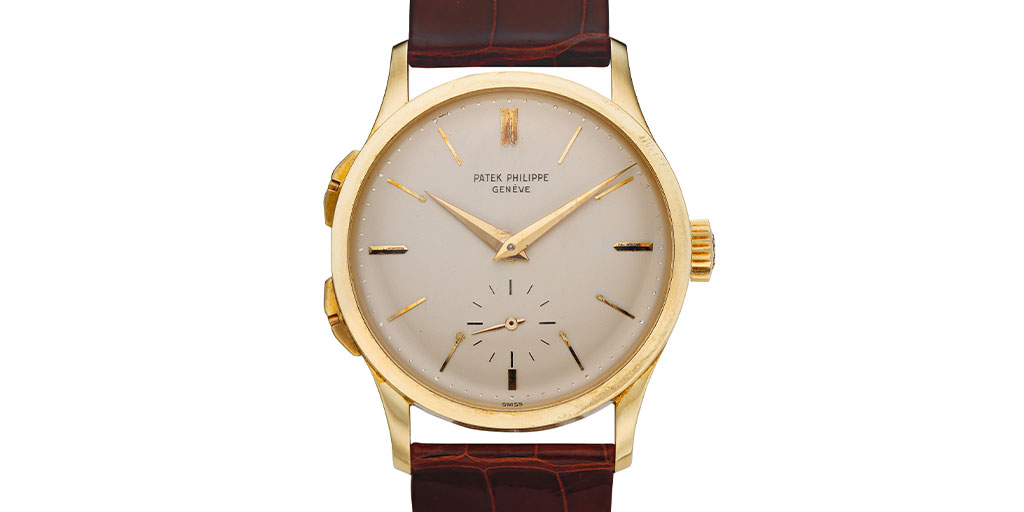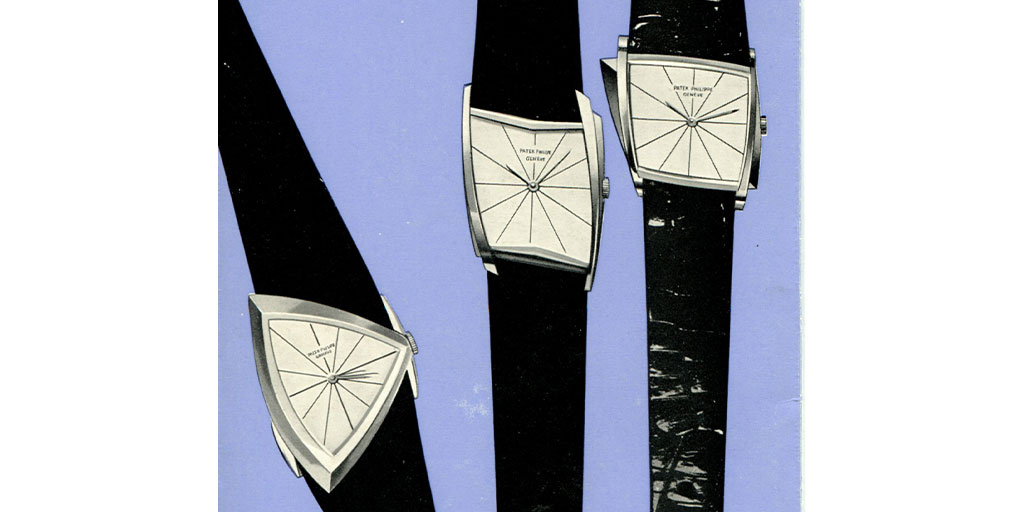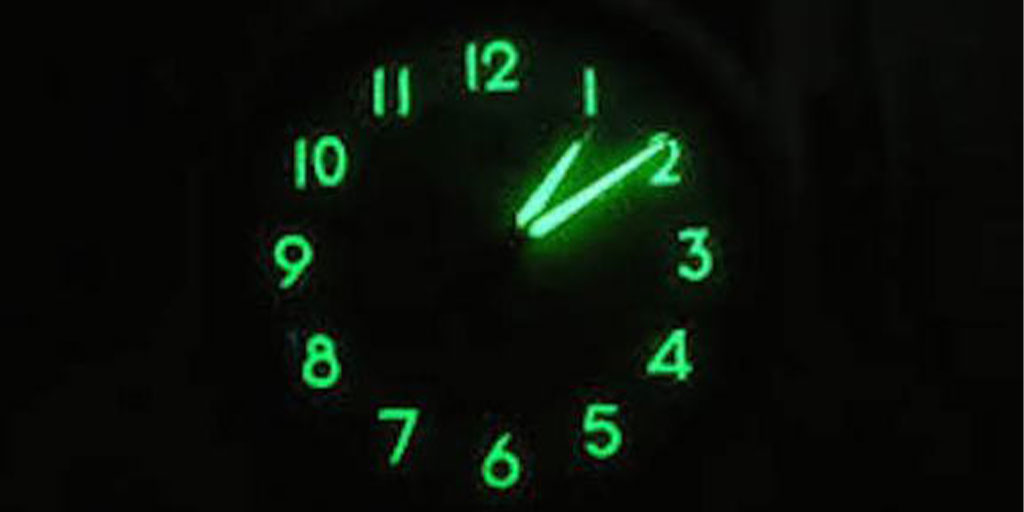Question: What was the first complicated wristwatch made by Patek Philippe for women? Answer: ref. 4864 Travel Time in 1997. It may have taken Patek 70 years to include ladies in its series of complicated wristwatches, but the choice of a Travel Time movement was significant. In this article, we will discover the origins of this important and somewhat under-appreciated complication.

The Travel Time or Dual Time Zone complication has been in Patek Philippe’s collection since the 1950s when the exciting, early days of commercial air travel started to become the norm. For those privileged to experience travel across continents, demand was needed for a watch that kept the owner informed of the time both at home and at their current location. Patek Philippe was more than happy to provide such a watch for its distinguished clientele and in 1958 introduced the superlative ref. 2597. This elegant watch for the jet set was fitted with an ingenious movement developed by the legendary Louis Cottier (1894 – 1966). Best known for his World Time movement, Cottier was the right person to design a time-zone jumping watch that could be updated without stopping the minutes and seconds hands – and most importantly for busy executives – no need to take off the wrist to adjust. The first, ref. 2597 HS (Heures Sautante, or ”jumping hour”) had only an hour and second hand, which was independently adjustable by two elegantly integrated pushers on the left hand side of the case. Depressing the upper pusher made the hour hand advance by one hour, or one time zone; pressing the lower made the hour hand travel back one hour. The second version, ref. 2597-1, was first manufactured in March 1962 and had a second, blued steel hour hand, clearly distinguished from the gold local time hands. It too was adjusted similarly to the first version with the gold hour hand moving forward or backwards depending on the new, local time zone. The blue steel hand remained at the original home time. When not travelling, the second hour hand remained hidden under the first. The Heures Sautante system was patented in 1959 with the Swiss Patent 340191 for a “Time Zone Watch” after Louis Cottier’s prototype in 1953.
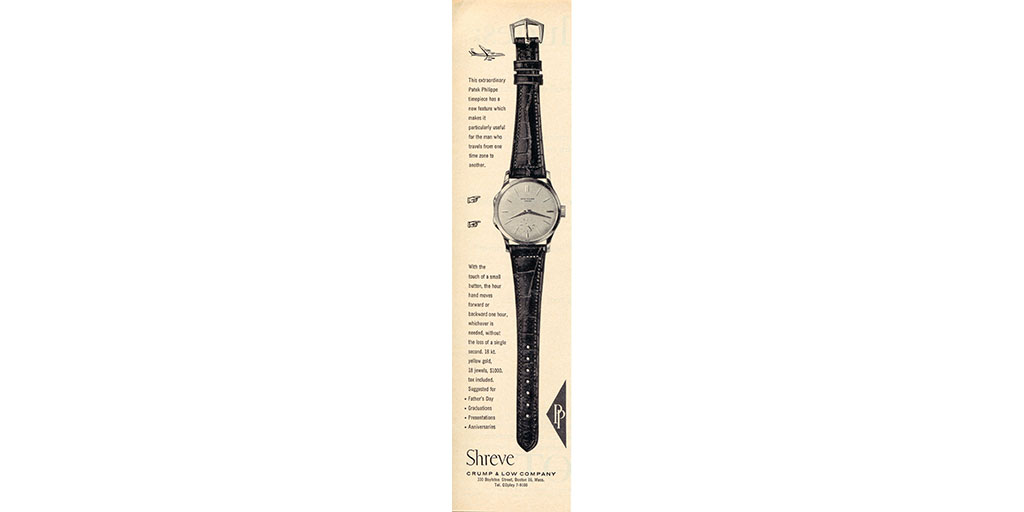
The first series ref. 2597 was also known as the “Cross Country” in the USA and retailed for 1000 USD which was a hefty price tag, for example a ref. 1518 sold for 1500 USD in 1958. The classic 35.5 mm Calatrava case in 18K yellow or rose gold was produced by Antoine Gerlach one of Patek’s favorite case makers that specialized in Calatrava cases such as refs. 96, 570 and 3448. From 1958 – 1962, it is estimated that Cottier was given around 90 movements of calibers 12 400 or 27 AM 400 to modify with the travel time setting function. The first series was produced from 1958 – 1961 and the second series from 1962 – 1977. It is estimated that a total of 75 watches were made in 18K yellow gold and 15 in 18K pink gold. So far, only 48 pieces have been identified in yellow gold and six in pink.
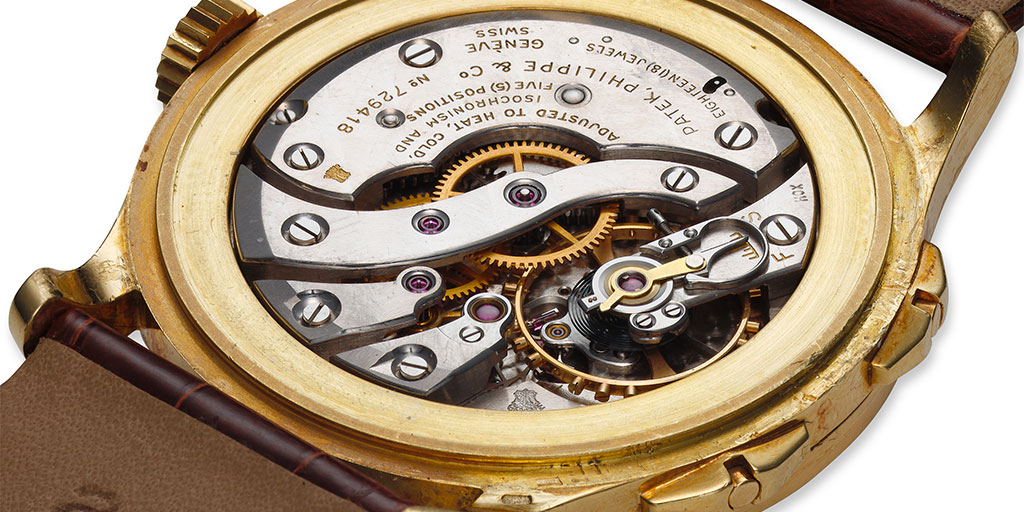
It is important to note that by the 1970s, Patek Philippe offered a “3rd hand parts set” to retailers who still had the original, first series two hands ref. 2597 in inventory so that they could update a single hour hand into a dual hour hands series. If you are lucky enough to get your hands on a first series ref. 2597 (pre 1962) but it has two hour hands, beware! The later addition of the second hour hand to the first series will affect the value.
The original 1000 USD price tag has proven an extremely good return as at auction in 2017 a second series ref. 2597R sold for 540,500 CHF. [https://www.phillips.com/detail/patek-philippe/CH080217/255 ]
In addition to the ref. 2597, Patek Philippe only produced three other Travel Time watches between 1961 and 1986. The exceptionally rare ref. 3452 automatic dual dial Travel Time was produced between 1961 – 1963. It is estimated that only a total of seven pieces were manufactured after a 1954 prototype developed by Louis Cottier. Each of the known pieces are different in either dial, lugs or with a case color of 18K yellow, rose or white gold. In 2006, a 18K yellow gold ref. 3452/1 sold at Sotheby’s in Geneva for 240,000 CHF.
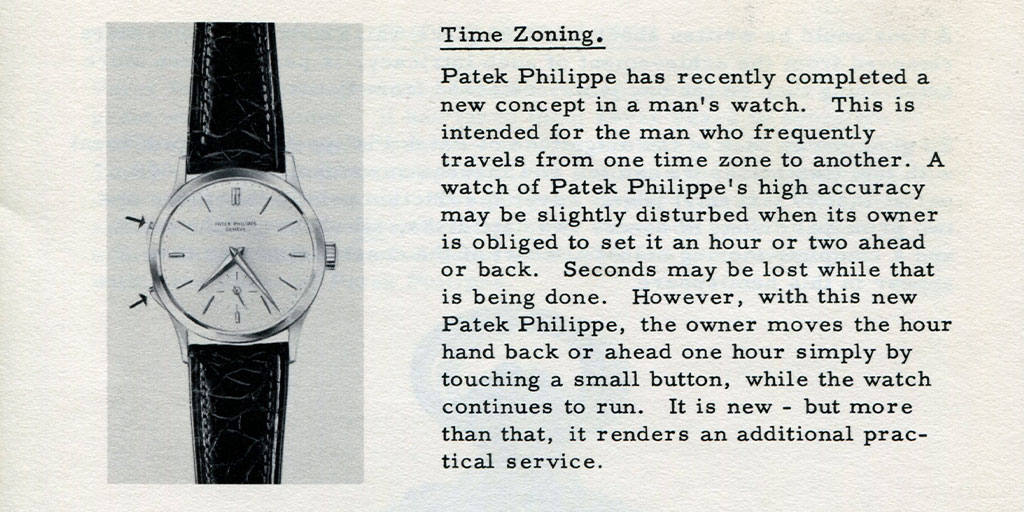
The ref. 3619 was launched around 1976 and during its 10 year production remained one of the rarest complicated timepieces of the period. This is the reference that followed the ref. 2597 and each of the estimated 50 pieces produced feature three hands using the caliber 27 AM 400 movement modified by Cottier to become the 27 HS 400. The large, horizontal “Ellipse” case (33 x 38 mm) was made with straps, ref. 3619 (around 35 made, 13 identified) or bracelets ref. 3619/1 (around 15 made, 6 identified) and recall the design of the “Beta 21” cases launched a few years earlier. Most examples have blued gold dials with 12 diamond hour markers by Stern Frères; they also exist with black dials with larger diamond hour markers; the rarest are silvered dials with either Breguet or diamond hour markers. An example of ref. 3619 with a white lacquer dial with Breguet numerals (made per the request of the original owner) sold at Phillips, Geneva for 68,750 CHF in 2017.
Last but not least of the early Travel Time movements based on Cottier’s design is the ref. 4404 Jewelry Dual Time made between 1976 – 1979. So far, only eight examples of the twin dial bracelet watches have appeared on the market, all in 18K white gold with exquisite mesh bracelets made by Jean-Pierre Ecoffey in Geneva. The cases were made at Ateliers Réunis and house the smallest movement that Patek Philippe made: the caliber 13 5 320 which was launched in 1959. The distinctive dials were made by Stern Frères in gold plate with different kinds of applied semi-precious and precious stones such as onyx, jade, lapis, diamonds and mother of pearl. An example with a 18K white gold, onyx and diamond set dial sold at Christie’s, New York in 2016 for 20,000 USD.
After a break of almost twenty years, the Travel Time returned in 1997 with the launch of ref. 5034 and ref. 4864. These two references are significant as they are part of Philippe Stern’s brilliant addition to the company’s collection of complications known then as ‘small’ or ‘useful complications’. Stern realized that the wide price difference between a time-only and a complicated wristwatch such as a perpetual calendar was preventing a large number of clients taking the next step up the horological ladder. The new Time Zones and the ref. 5035 Annual Calendar launched the year before, were part of a series which provided ‘useful complications’ – additions to the movement of a time-only watch that could be used on a regular or daily basis (as beautiful as it is, a perpetual calendar’s most sophisticated complication is only really useful every four years). These useful complicated watches, now known simply today as ‘complicated’ in the company’s collection, really changed the fortunes for Patek Philippe as it opened up a new price point for both established and new clients. As noted at the beginning of this article, the ref. 4864 was the first complicated wristwatch for women and a benchmark moment in watchmaking recognizing that women are interested in fine timepieces – as well as just as likely to hop on a transatlantic or cross continent flight as any working man! Both Travel Time references used a version of the caliber 215 PS which added a sub-seconds and a helpful 24-hour display for the second time zone. The men’s ref. 5034 34 mm case and was made in 18K yellow, white and gold. The ladies ref. 4864 29 mm case and was also made in 18K yellow, white and rose gold.
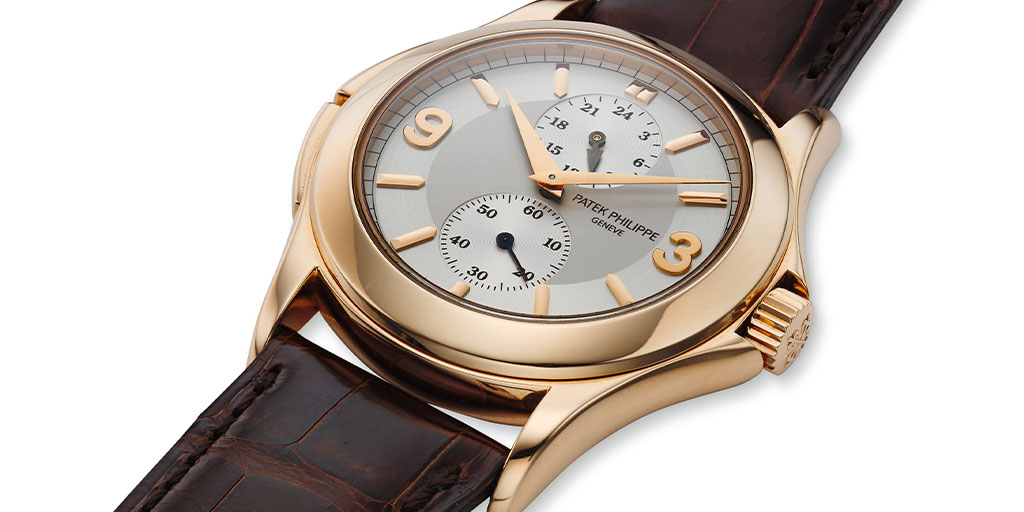
In 2001, the ref. 5034 was replaced by the ref. 5134 with a larger 37 mm case and a modern, sleek design, more in keeping with the original ref. 2597. Variations of this line stayed in production until 2008 when the model was discontinued. Fortunately, Travel Time fans did not have to wait too long for the launch of the Aquanaut Travel Time ref. 5164A in 2011. Significantly, this was the first time that the Aquanaut incorporated a complication and its usefulness proved an appropriate addition to this line of iconic sports watches. In a perfect example of function following form, with this Time Zone version, each hour hand has its own AM/PM indicator via a pair of small apertures on the dial which transition from white to dark blue as either of the local or home time displays move from day to night. The 40.8 mm case houses a self-winding caliber 324 S C FUS movement with a 45-hour power reserve. See Ben Clymer’s In-Depth review of the ref. 5164A in Hodinkee.
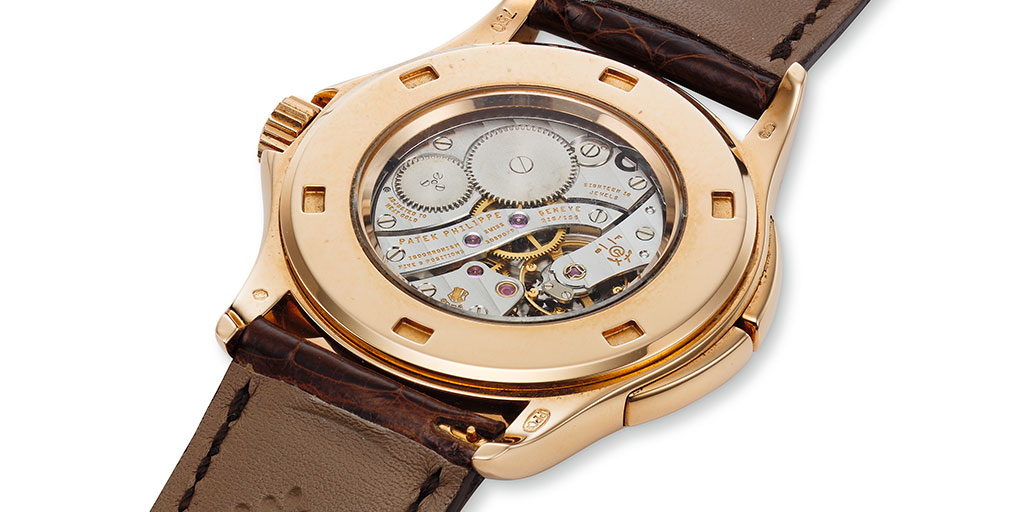
For its modern collection, Patek Philippe has incorporated the travel time movement into several watches such as the Nautilus ref. 5990 which includes a chronograph, the Calatrava Pilot Travel Time ref. 5524 and the ref. 7234 which is a ladies version of this super-cool Aviator watch. In the ref. 5520 Alarm Travel Time, Patek Philippe took the travel time function to a grand complication level with the addition of an innovative mechanical alarm feature. Described by Patek as “seriously clever and seriously practical”, the useful complication has come a long way. Cottier would have been seriously impressed.

